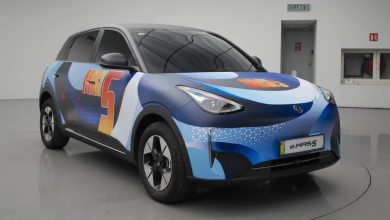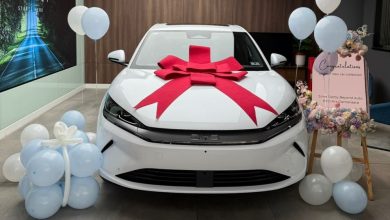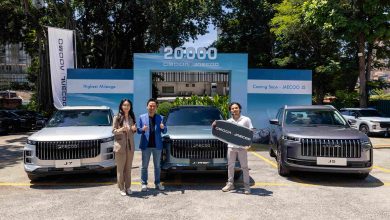Radically Restyled Hyundai Kona Electric Facelift Unveiled

Hyundai has updated its electrified Kona, adding a new look and a host of tech updates.
Coming right off the heels of the refreshed petrol-powered Kona, Hyundai has recently brought these raft of new updates to its electrified counterpart too in the form of this 2021 Hyundai Kona Electric.
Much like the updates seen on its fuel-burning stablemate, the new Kona Electric has been radically restyled from the outgoing model (which incidentally was just launched locally). These new styling tweaks on this new Kona Electric includes the slit-like LED DRL strips that were carried over from the regular Kona, not to mention the new headlights that sit lower down within the radically restyled front fascia. Aesthetic changes down the side and round the back meanwhile are limited to a 40 mm increase in length, and a pair of subtly restyled taillights.
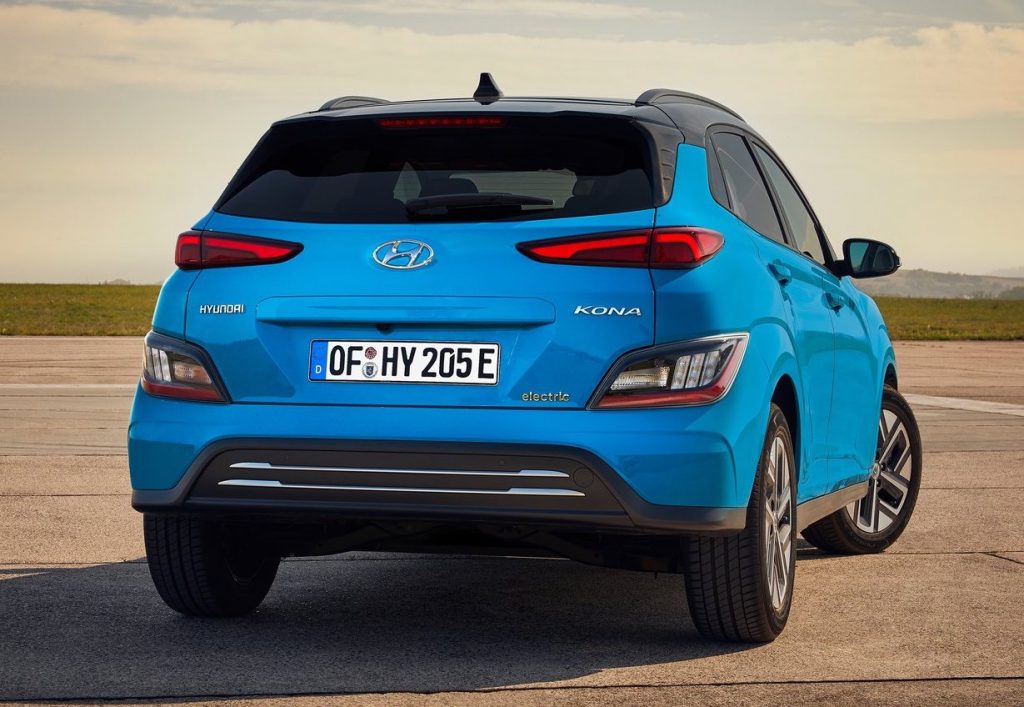
Going back to the topic of the front fascia, this popular all-electric compact crossover now features a completely closed off unit, with only a lower functional air intake and vertical side vents breaking up the flush aesthetic up front. Hence supposedly bringing it more in line with the clean style of EVs like the Teslas these days. Though Hyundai, curiously enough, still elected to stick with an asymmetric charging port up front which does kind of ruin that look if one stares at it long enough.

Speaking of charging, the updated Kona Electric carries over the powertrain from its predecessor like-for-like, thus meaning that two all-electric flavours of the Kona are still available. The basic short-range variant still maintains its 100 kW (136 PS) electric motor that is powered by a 39.2 kWh battery pack. 0-100 km/h for this version is done in just under 10 seconds and goes all the way up to 155 km/h, while the WLTP claimed range is an impressive 305 km.
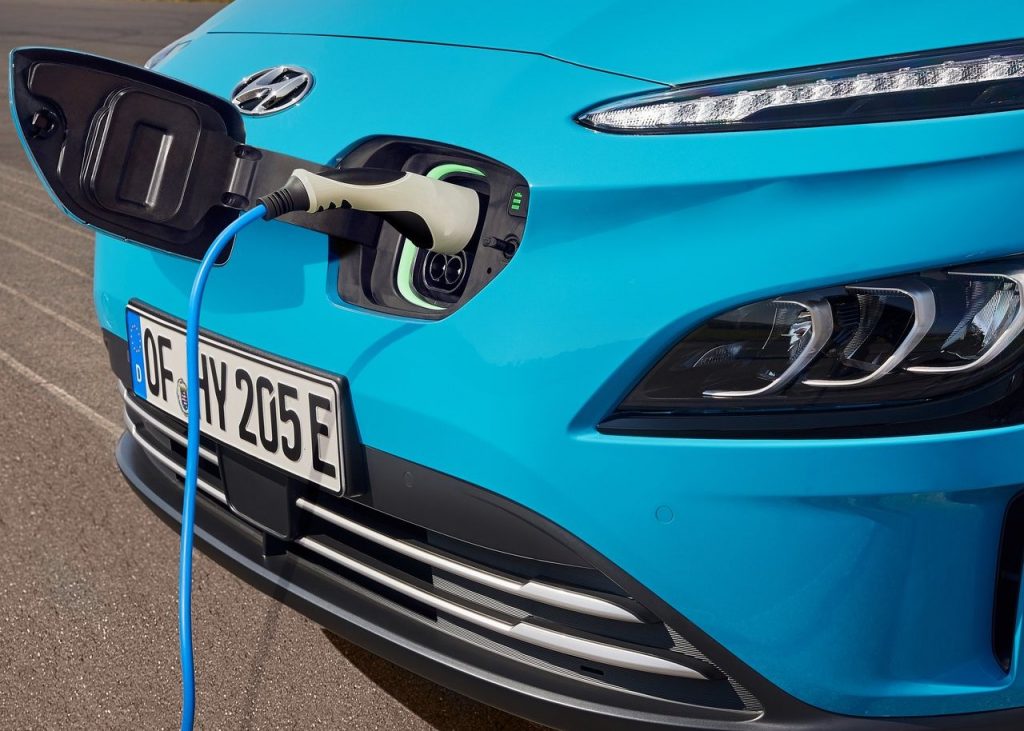
The long-range Kona Electric with its massive 64 kWh battery pack which powers a more powerful 150 kW (204 PS) electric motor is perhaps the more headline-grabbing variant however. Especially with its 0-100 km/h time in 7.9 seconds, a top speed of 167 km/h and most importantly a class-leading all-electric WLTP claimed range of 484 km.
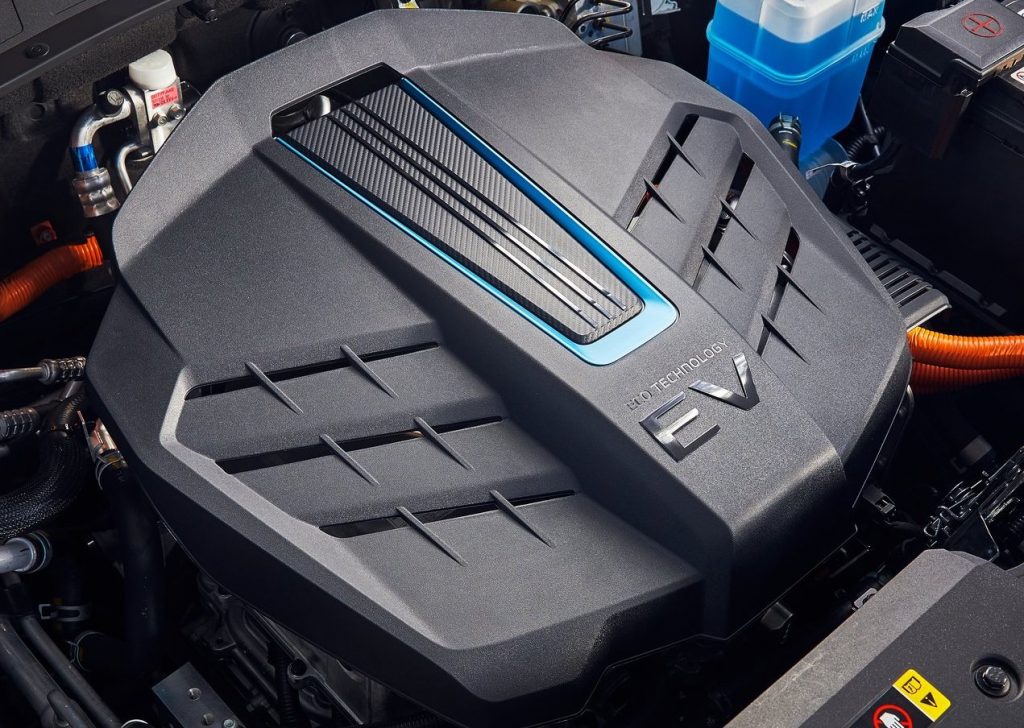
Moving on to the inside of the new Kona Electric, this update has brought with it a larger 10.25 inch digital instrument cluster, to complement the optional central infotainment touchscreen of the same size. Android Auto and Apple CarPlay are standard on both the standard 8-inch touchscreen and the optional larger one, though it would appear that Hyundai’s updated Bluelink features are only offered with the upgraded unit.
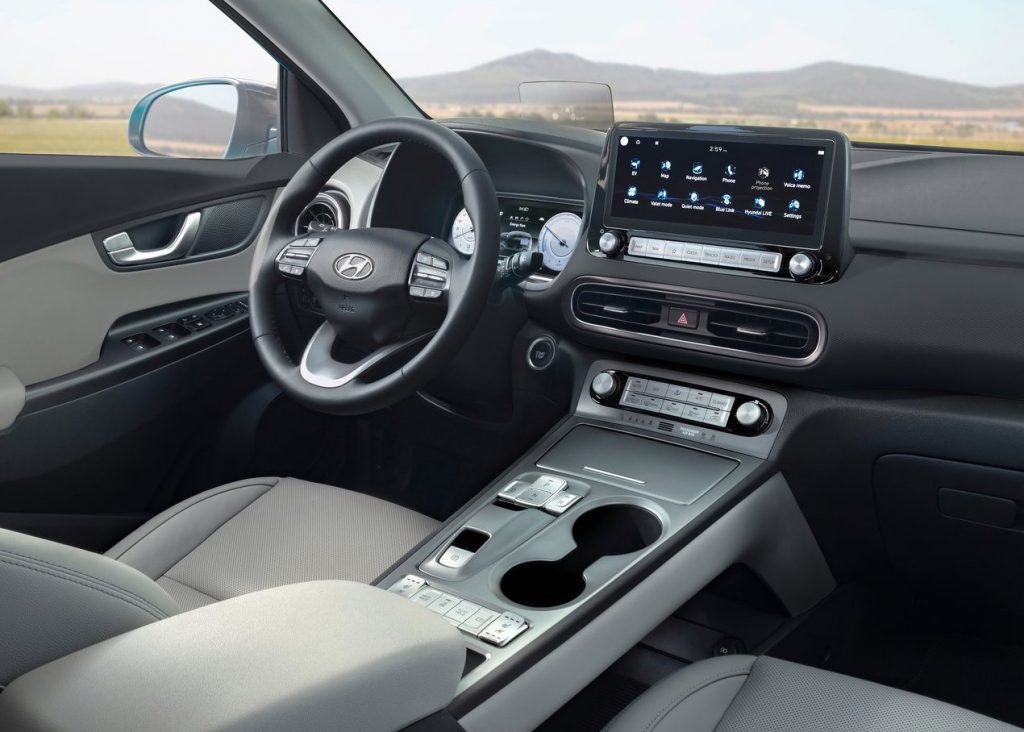
This then might be an option that buyers would tick as the updated Bluelink connectivity service adds voice control, remote charging, remote climate control, Last Mile Navigation and a host of other convenience features for which can be controlled on an app on the owner’s smartphone.

Other new features found within the cabin of the refreshed Kona Electric includes new ambient light technology which now illuminates the front footwells. Rear seat occupants meanwhile gain the use of additional USB charging sockets, in addition to the rear heated seats carried over from the pre-facelift variants.
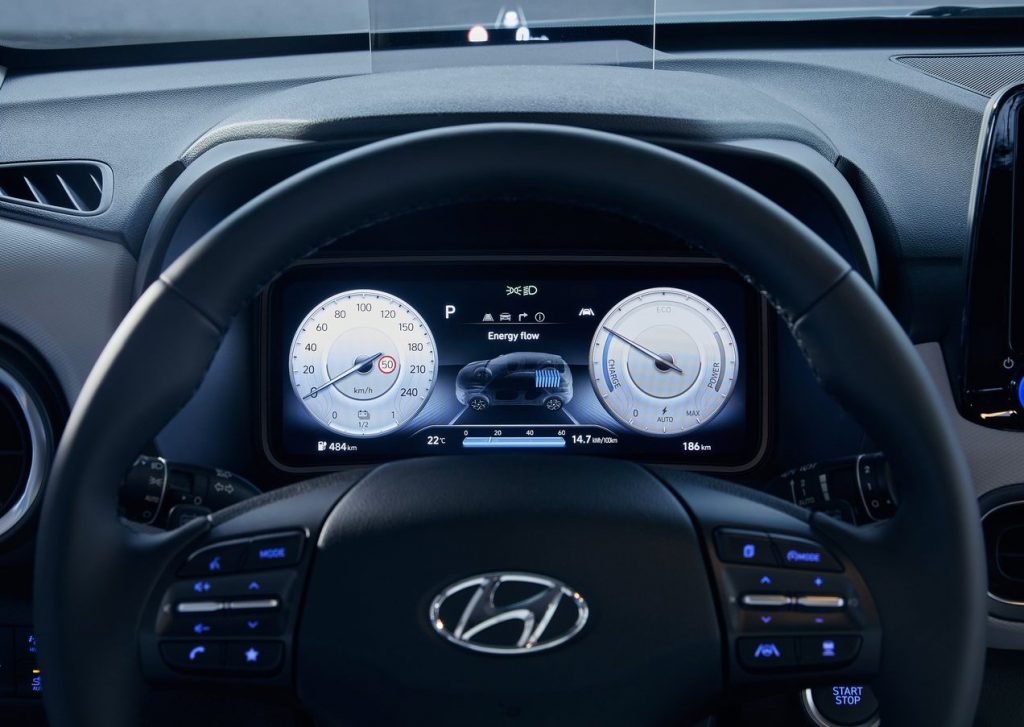
As for safety, this updated Kona Electric gains a few new active driver aids to the already comprehensive Hyundai SmartSense active driver suite, the highlights of which include the new Leading Vehicle Departure Alert (LVDA), Rear Cross-Traffic Collision-Avoidance Assist (RCCA) and Blind-Spot Collision-Avoidance Assist (BCA). Hyundai has also announced that the new Kona Electric will be offered with the eCall functionality, a feature which automatically alerts emergency services if the airbags are deployed or the eCall button is pushed.
Due on sale in March, prices have yet to be officially revealed by Hyundai. Conservative estimates however put it to be a touch pricier than the £33,150 (RM 181,500) of the outgoing model. At this price, it should be comparable to the Nissan Leaf if it were officially imported to Malaysia. Though seeing as Malaysia has only recently launched the outgoing petrol-powered Hyundai Kona, hopes of this refreshed Kona entering the local market anytime soon is slim to none, and that is even before considering this electrified example here.
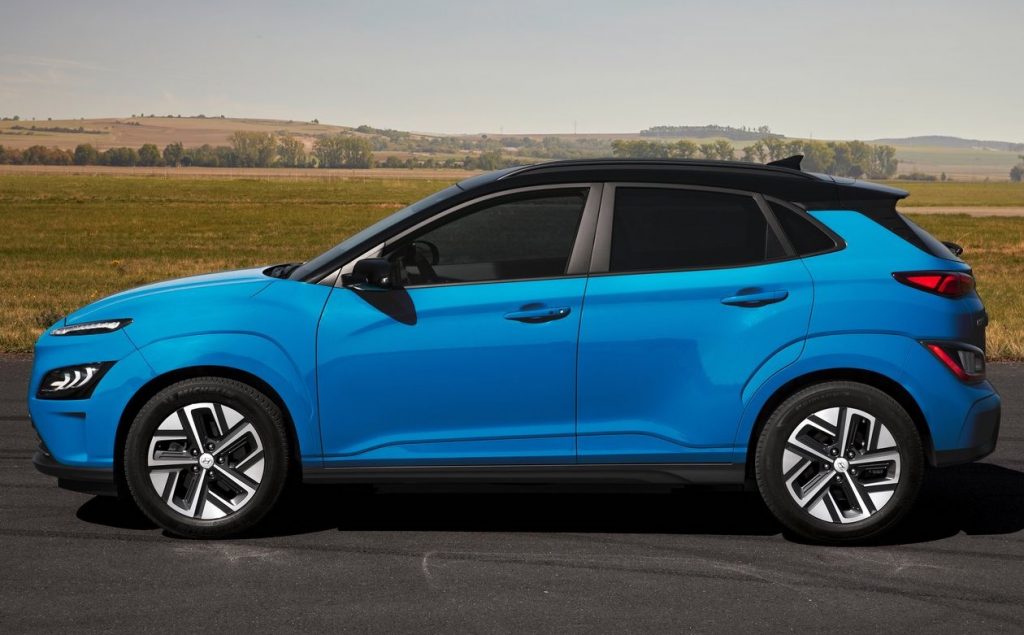
PRESS RELEASE: Hyundai Motor has made a series of updates to its successful all-electric sub-compact SUV, the Hyundai Kona Electric.
In order to make the new Hyundai Kona Electric an even better product for its customers, the upgrades revolve around design, technology, and practicality.
Since launching in 2018, demand for the Hyundai Kona Electric has exceeded all expectations in Europe, thanks to its powerful electric drivetrain, long driving range and stylish SUV looks. In just two years, over 120,000 units have been sold globally, including more than 53,000 in Europe. In August, three production models set a new range record of 1,026 kilometres on a single battery charge at the Lausitzring in Germany. Meanwhile, in January, the Kona Electric made it into the GUINNESS WORLD RECORDS™ under the category “Highest Altitude Achieved in an Electric Car”, after being driven to an altitude of 5,731 metres to Sawula Pass in Tibet.
In addition to these impressive feats, the sub-compact SUV also won many awards, making the list for the WardsAuto 10 Best Engine List for 2019 and earning the title “Affordable Electric Car of the Year” at the Auto Express New Car Awards. In April 2020 TopGear magazine named Kona Electric their “Best Small Family Car” in the inaugural TopGear Electric Awards, after it completed a 1,600-kilometre road trip across 9 European countries.
In March 2020, Hyundai started production of the Kona Electric at its Czech production plant, Hyundai Motor Manufacturing Czech (HMMC). This enables the company to significantly reduce customer waiting times for new electric cars.
The new Hyundai Kona Electric has undergone bold design upgrades for a pure new look, as well as featuring safety enhancements and an advanced technology package.
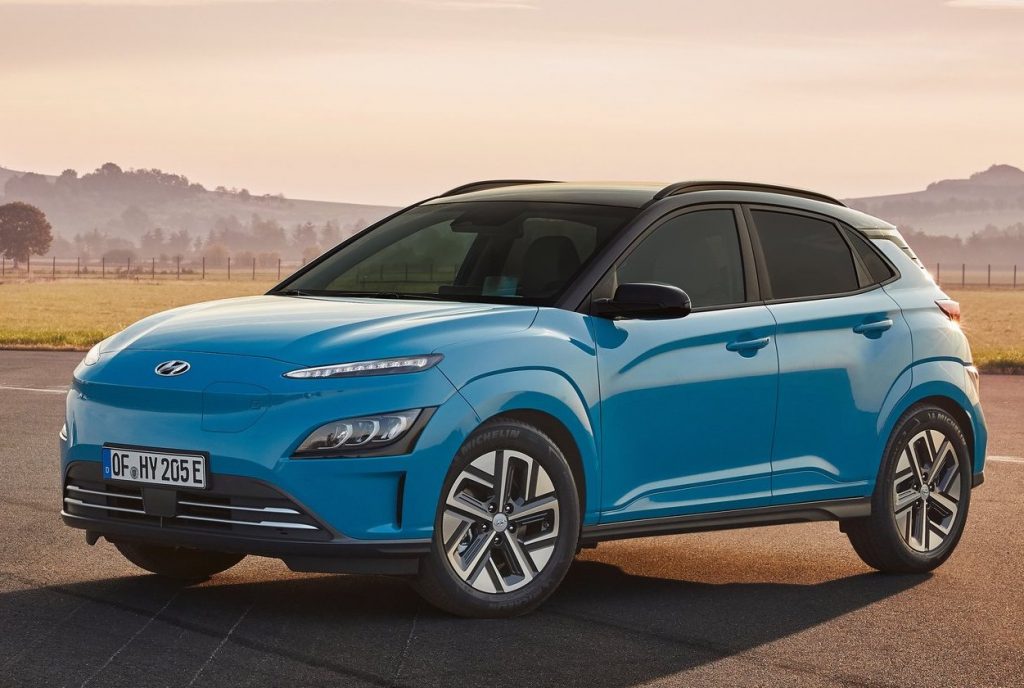
Pure and stylish design signifying clean electric mobility
The new Hyundai Kona Electric has undergone a series of bold exterior design updates. By combining a clean and sleek appearance with the protective and bold B-SUV body type of the Kona, it expresses its exceptional electric technology while being even more recognisable on the road.
The front with the new-look closed grille features a pure and clean design. This modern look is further enhanced by the new LED Daytime Running Lights, which emphasise the car’s wide stance. The front is complemented by an asymmetric charging port, a feature unique to the Kona Electric which makes a strong statement about driving electric.
New, sharper headlamps stretch around the side of the car. The high-tech headlamp inner bezel now incorporates multifaceted reflector (MFR) technology. The headlamps are connected to the painted wheel arch claddings, giving the new Hyundai Kona Electric a distinctive and sophisticated look. Vertical air inlets in front of the wheel arch claddings enhance its aerodynamics, substantially reducing turbulence in the front wheelhouse area. Meanwhile, a functional air intake in the lower bumper is visually enhanced by horizontal satin accent bars, which give it a pronounced stance.
The rear bumper retains the accent bars to add value to the overall look of the car, while new horizontally-stretched rear lamps complement the pure appearance of the front.
Like the new Kona with internal-combustion and hybrid powertrains, the new Kona Electric is 40 millimetres longer than the previous version. This ensures it has a dynamic appearance combined with a strong visual stance.
An updated interior with progressive technology
For the first time, the new Hyundai Kona Electric is equipped with a 10.25-inch digital cluster, while an optional 10.25-inch AVN screen is carried over from the last update. The AVN unit incorporates multimedia and convenience features including Bluelink®, Hyundai LIVE Services and Apple CarPlay and Android Auto, further democratising advanced connectivity for Hyundai drivers. Customers who select the eight-inch Display Audio system can wirelessly connect their smartphones to Apple CarPlay and Android Auto.
New Kona Electric customers can enjoy the new Bluelink® upgrade, which allows them to control their car with their smartphone or voice to make their drive more convenient and enjoyable. The app displays the vehicle’s range and battery state, as well as charging times, when plugged into different public or private charging points. Users can access an advanced battery management system in order to select charging times that best fit their schedule or their budget by making the most of off-peak electricity rates.
Thanks to Remote Charging, new Kona Electric drivers can start and stop charging at the push of a button on their smartphone via the Bluelink® app. During colder months, Remote Climate Control allows users to schedule a time that they would like to pre-heat their car electrically when connected to an external power source. As well as providing additional comfort to occupants, this also saves battery power that would otherwise be needed to heat the vehicle on the road.
The latest Bluelink® upgrade includes a range of new and advanced connectivity features for increased convenience. User Profile offers increased personalisation, and can be transferred to other Hyundai vehicles providing the same feature. Last Mile Navigation helps customers continue the journey to their final destination via the Bluelink® app even after their car has been parked, using either Augmented Reality or Google Maps. Connected Routing harnesses real-life and historical speed information through GPS, which is stored in the server and updated every month, to predict upcoming traffic every five minutes. This ensures more accurate traffic forecasting, more precise times of arrival, and more reliable route recalculations. Live Parking Information gives users real-time information on the location and price of nearby available parking spaces. In addition, the latest Bluelink® upgrade features Free Text Search for users to enter addresses or points of interest.
Meanwhile, new ambient light technology illuminates the passenger and driver side footwell, emphasising the lifestyle character of the vehicle.
Customers can select from two interior colour packages for further customisation. The one-tone Black package is available with cloth, cloth-leather or leather materials. Alternatively, the two-tone Grey interior package is available with cloth-leather mélange or leather materials.
Segment-leading driving range
Like its predecessor, the new Hyundai Kona Electric offers two different zero-emissions battery electric powertrains, with no compromises on performance.
The long-range version with a 64 kWh battery features an electric motor which delivers maximum power of 204 PS (150 kW), accelerating the Kona Electric to 100 km/h in 7.9 seconds. The basic version has a battery capacity of 39.2 kWh, with the motor delivering 136 PS (100 kW), accelerating to 100 km/h in 9.9 seconds. The long-range battery version provides a maximum speed of 167 km/h, with the standard-range battery version offering 155 km/h.
Both powertrain versions deliver 395 Nm of immediate torque, ensuring the new Kona Electric is fun-to-drive with full power available from the first second.
Since its launch in 2018, the Hyundai Kona Electric has been equipped with one of the best all-electric driving ranges in its segment. After tyre improvements on the 2020 model year update, the 64 kWh battery version offers a class-leading range of 484 kilometres (WLTP) on a single charge. Meanwhile, the 39.2 kWh model offers a range of up to 305 kilometres (WLTP).
The shift-by-wire system enables operation of the car simply by pressing buttons to switch driving modes. It also eliminates the routing space required for housing the mechanical linkages between a normal shifter and the transmission, providing additional storage space in the front of the car.
The Smart Adjustable Regenerative Braking system allows the new Kona Electric to automatically set the regenerative braking level, while paddle shifts behind the steering wheel allow the driver to adjust the intensity of the regenerative braking. The system recuperates additional energy when possible. Regenerative braking is maximised when keeping the left pedal held, allowing the driver to even bring the vehicle to a full stop – without use of the brakes.
Charging the lithium-ion polymer battery from 10 to 80 per cent only takes about 47 minutes using a 100 kW direct current (DC) fast charger. The Kona Electric features an optional 10.5-kW three-phase on-board charger, allowing for significantly shorter charging times using public three-phase AC charging stations or with a private compatible wall box at home. Drivers also have the option of charging their car at a compatible regular household power socket using the ICCB-cable (in-cable control box).
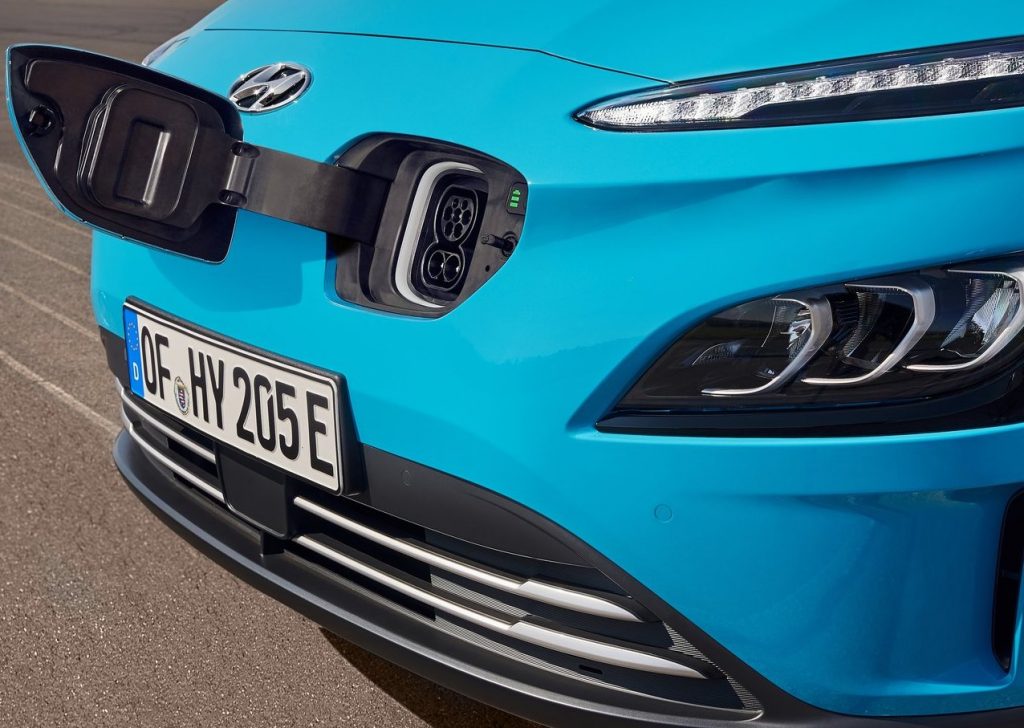
Even more best-in-class safety features
The new Hyundai Kona Electric features a state-of-the-art Hyundai safety package for peace of mind. Hyundai SmartSense provides comprehensive, best-in-class active safety and driving assistance systems, and the new Kona Electric is now equipped with even more functions than its predecessor.
Upgraded Hyundai SmartSense features that feature on the new Kona Electric include Rear Cross-Traffic Collision-Avoidance Assist (RCCA) and Blind-Spot Collision-Avoidance Assist (BCA), which offer not just warnings to drivers, but also implement the brakes where necessary. RCCA works to avoid a collision when reversing, as the car’s sensors detect approaching vehicles from both sides, with the brakes applied if necessary. Meanwhile, BCA engages the car’s differential brakes to prevent an accident if another vehicle is detected near the rear corner and the driver attempts to change lanes.
Another feature new to this model is Leading Vehicle Departure Alert (LVDA), which alerts the driver if they do not react fast enough when the vehicle ahead of them starts moving. Further new safety features include Safe Exit Warning (SEW) and Rear Seat Alert (RSA). SEW warns passengers intending to exit the vehicle if it is not yet safe to do so. RSA is a door-checker feature that recognises if the rear doors have been opened prior to departing. When the drive is completed, the car alerts the driver if someone or something is in the back seat when they open the doors. In addition, the new Kona Electric is also available with eCall, a feature which automatically alerts emergency services if the airbags are deployed or the eCall button is pushed.
Hyundai SmartSense safety features:
- [NEW] Blind-Spot Collision-Avoidance Assist (BCA)
- [NEW] Rear Cross-Traffic Collision-Avoidance Assist (RCCA)
- [NEW] Leading Vehicle Departure Alert (LVDA)
- [NEW] Safe Exit Warning (SEW)
- [NEW] Rear Seat Alert (RSA)
- Forward Collision-Avoidance Assist with pedestrian and cyclist detection (FCA-Ped)
- Smart Cruise Control with Stop & Go (SCC w/ S&G)
- Lane Following Assist (LFA)
- Lane Keeping Assist (LKA)
- Intelligent Speed Limit Warning (ISLW)
- Driver Attention Warning (DAW)
Increased comfort and convenience
A number of convenience features allow for a more comfortable ride, in particular for back seat passengers. As with its predecessor, the new Hyundai Kona Electric’s second row heated seats allow rear passengers to relax when travelling on longer journeys. The new second row USB port delivers additional power to recharge devices on-board if needed. Meanwhile, an electric parking brake offers even more reassurance for drivers, and can be activated by the simple push of a button.
Charge myHyundai
Hyundai recently announced it is launching Charge myHyundai, a pan-European integrated public charging service. This means new Kona Electric owners will have access to over 170,000 charging points across Europe and can enjoy a streamlined one-payment solution via a single card or an app. Customers can easily find available charging stations using the AVN system.
Charge myHyundai is being introduced in six European markets initially: France, Italy, Spain, Norway, the Czech Republic and Switzerland. The service will be activated for UK customers in the fourth quarter of 2020. Hyundai plans to extend the service to customers in more countries in the near future.

